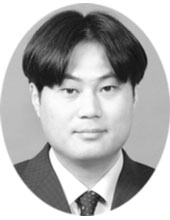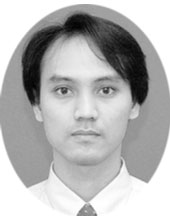Best Paper Award
Singular-Spectrum Analysis for Digital Audio Watermarking with Automatic Parameterization and Parameter Estimation
Jessada KARNJANA, Masashi UNOKI, Pakinee AIMMANEE, Chai WUTIWIWATCHAI
[Trans. Inf. & Syst., Aug. 2016]

Jessada KARNJANA
Masashi UNOKI
Pakinee AIMMANEE
Chai WUTIWIWATCHAI
Audio watermarking is a technique whereby additional information can be embedded into digital audio content such as speech or music. This technique is useful for preventing illicit use of digital audio content by a malicious person because the additional information is inseparable from the host signal and thereby traceable to its origin.
However, the audio quality should not be degraded by this process. Because of that requirement, a watermarking technique needs to balance the capacity of additional
information and the inaudibility of watermarking. In addition, embedded watermarks should be resilient to common signal processing, such as audio compression, and it is
desirable that no information about parameters used in embedding is necessary for watermark detection.
To meet these various complex requirements, the proposed method in this paper uses Singular Spectrum Analysis (SSA) to analyze the host signal and then modify some of the obtained spectrum in a certain manner in order to embed watermark information. To the best of my knowledge, the authors are the first group of researchers to apply such a novel approach to audio watermarking and therefore are worthy of appreciation. They also introduce a new cost function which balances sound quality and robustness and
achieves optimization of parameters such as lower and upper limits of the singular spectrum region for watermarking by means of differential evolution. Because the optimum parameters can be automatically obtained by this process, the proposed method is widely available to anyone, including those who are unfamiliar with audio watermarking, and this feature makes the method practical.
It is noteworthy that blind detection, which is difficult to achieve with most conventional methods, is realized in this method by maneuvering a concave or convex shape of singular spectrum. The shape, which is constituted of many points, is more qualitative than individual values at each point and therefore robust against small variations. This characteristic makes it possible to detect embedded watermarks without having precise information about the parameters used in embedding. Computer simulations regarding robustness against attacks demonstrate that the proposed method outperforms a conventional method based on Singular Value Decomposition (SVD). Moreover, listening tests reveal that the watermarked audio signal made using the proposed method with optimized parameters is almost indistinguishable from the original audio signal. As mentioned above, this paper contributes significantly to advancement of this research field and, therefore, is deserving of the Best Paper Award.








